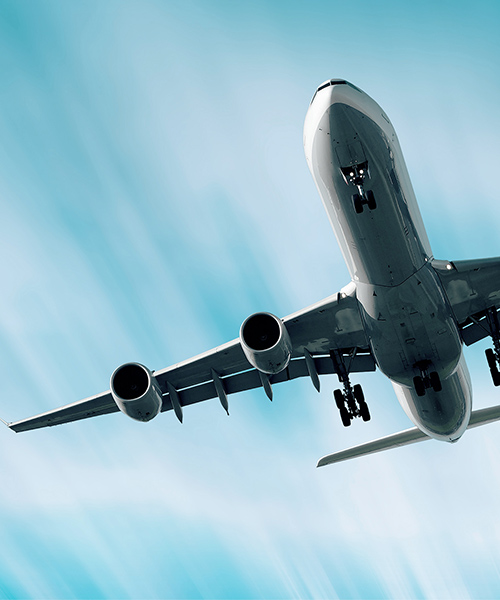January 27, 2022 • 3 min read
Sustainable aviation fuel: How it can decarbonize air travel
Aviation fuel usually comes from crude oil. However, sustainable aviation fuel is emerging as an alternative to decarbonize the aviation industry.
Apart from 2020, can you remember a time when you looked up and didn’t see planes in the sky? Air travel has become an indispensable part of modern life. We depend on aircraft to take people on holiday, to see family abroad, to build businesses, and to transport products, food, and post items all over the world.
However, CO2 emissions from air travel continue to accelerate climate change. We need to find a pathway to more sustainable aviation. But how?
The problem with traditional aviation fuel
Air travel is responsible for approximately two percent of global energy-related CO2 emissions (IEA). Most of this CO2 is emitted when fossil fuel-derived jet fuel is combusted in jet engines.
The aviation industry is committed to net zero carbon CO2 emissions by 2050. This target will require a combination of more sustainable fuels, new propulsion technologies, infrastructure upgrades, efficiency improvements, carbon capture, and carbon offsetting schemes.
But with jet fuel emissions growing, commercial aviation needs an immediate decarbonization solution. And the only viable lower carbon replacement for fossil jet fuel is sustainable aviation fuel.
What is sustainable aviation fuel?
Sustainable aviation fuel, commonly referred to as SAF, is a more environmentally sustainable alternative to fossil jet fuel. It must have identical or superior performance to traditional jet fuel.
However, there’s a big difference; we do not need crude oil to produce it. Producers make this sustainable aviation fuel from a variety of sources including used vegetable oils, household waste, waste gases, animal fats, forestry residue, and even CO2 captured directly from the air.
SAF is referred to as a drop-in fuel because it can replace fossil jet fuel. You don’t need to make any modifications to the aircraft’s engine or fuelling system to use SAF, and you can also use existing infrastructure to transport, store and distribute it at airports.
Why is sustainable aviation fuel important?
SAF reduces the carbon intensity of air travel by up to 80 percent over its life cycle (IATA). That makes SAF the most viable option to decarbonize the aviation sector with technologies we’re already using today.
SAF has helped to power over 370,000 flights since 2016, and global production totaled 600 million liters in 2023 (IATA). However, SAF makes up only one percent of all jet fuel produced today. To meet the industry’s net zero targets, SAF needs to be the primary fuel source by 2050. This requires the production capacity of SAF to increase tenfold compared to current production levels.
How is sustainable aviation fuel made?
There are six certified pathways to produce SAF. These include Fischer-Tropsch, hydrotreated esters and fatty acids (HEFA), alcohol to jet, and other less developed processes. These processes vary in technical and commercial aspects, but they each produce a liquid fuel that can replace fossil fuel-derived jet fuel.
We generate waste all over the world, so the feedstocks for SAF can come from anywhere, rather than just traditional oil producing nations. This could change the dynamics of the aviation industry, because if waste feedstocks are readily available, more countries can build the processing facilities, refineries, and infrastructure to produce SAF.
The flight path to carbon neutral aviation
By 2050, SAF will contribute to the abatement of over 50 percent of CO2 emissions associated with the aviation industry (IATA). Right now, SAF production is increasing yearly, helping the aviation industry meet its decarbonization targets and abide by existing and upcoming legislation.
Other solutions such as battery and hydrogen fuel cells powered aircraft will have to be implemented and fully commercialized. This will require government and industry collaboration. Because a combination of technologies, including SAF, will utimately enable a carbon neutral global aviation industry by 2050.





